Snake plants, also known as Sansevieria or Dracaena trifasciata, are a popular choice for indoor plants due to their low maintenance requirements and air-purifying abilities.
However, brown edges on snake plant leaves can be a common issue that plant owners may face. The brown edges can be unsightly and may indicate an underlying problem that needs to be addressed.
Identifying the problem is the first step in addressing brown edges on snake plant leaves. Brown edges can be caused by a variety of factors, including overwatering, underwatering, low humidity, too much direct sunlight, and pests. It is important to examine the plant closely and determine the cause of the brown edges to effectively treat the problem.
Common causes of brown edges on snake plant leaves include overwatering and underwatering. Overwatering can lead to root rot, which can cause brown edges and other symptoms such as yellowing leaves and a mushy stem.
Underwatering, on the other hand, can cause the plant to become dehydrated, resulting in brown edges and a wilted appearance. Other causes of brown edges include low humidity, too much direct sunlight, and pests such as spider mites and mealybugs.
Key Takeaways on Snake Plant Edges Turning Brown
- Brown edges on snake plant leaves can be caused by a variety of factors, including overwatering, underwatering, low humidity, too much direct sunlight, and pests.
- Identifying the cause of the brown edges is crucial in treating the problem effectively.
- Prevention and care, such as proper watering and pest control, can help prevent brown edges on snake plant leaves.
Check out these other popular posts in this category:
Identifying the Problem
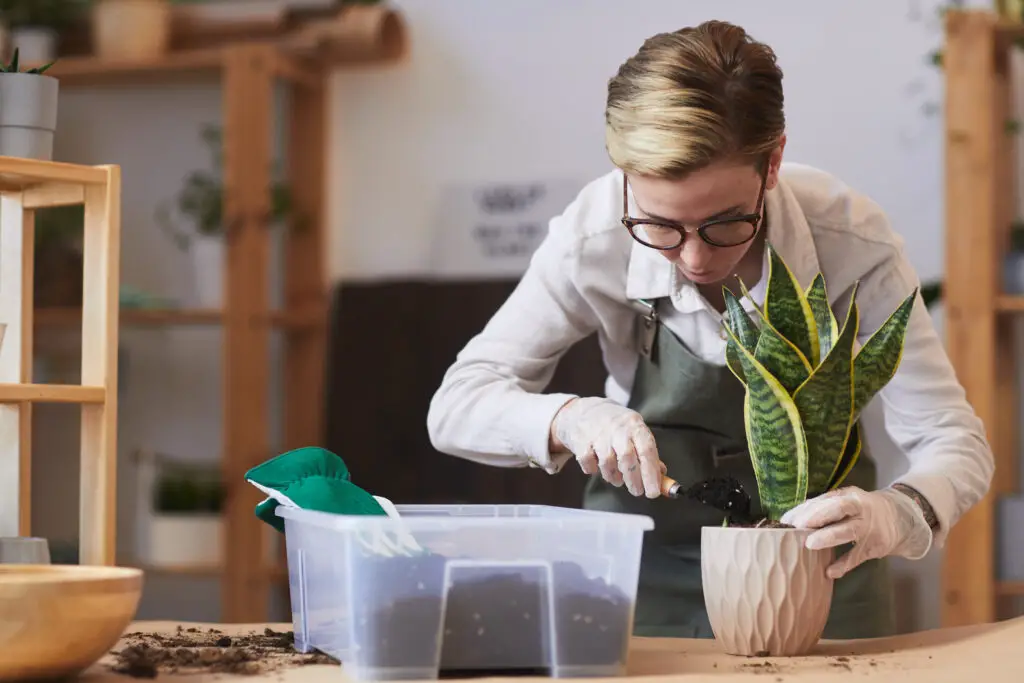
Recognizing Brown Edges
If you notice that the edges of your snake plant’s leaves are turning brown, it’s a sign that something isn’t right. Brown edges can be caused by several factors, including underwatering, overwatering, too much direct sunlight, or exposure to cold temperatures.
To determine the cause of the brown edges, start by examining the soil. If the soil is dry, it’s likely that the plant is not getting enough water. On the other hand, if the soil is waterlogged, the plant may be getting too much water.
Another possible cause of brown edges is too much direct sunlight. If your snake plant is in a location that receives direct sunlight for several hours a day, it may be getting too much light. Move the plant to a location with indirect light to see if the problem improves.
Spotting Other Symptoms
In addition to brown edges, there are other symptoms that can indicate a problem with your snake plant. If the leaves are yellowing, it may be a sign of overwatering or exposure to cold temperatures. Curling leaves can be caused by underwatering or exposure to hot, dry air.
If you notice that the leaves are wrinkled or damaged, it could be a sign of pest infestation. Check the leaves and soil for signs of pests such as spider mites or mealybugs.
Lack of growth can also be a symptom of a problem with your snake plant. If the plant is not growing, it may be getting too little light or nutrients. Consider moving the plant to a location with more light or fertilizing it with a balanced fertilizer.
Common Causes of Brown Edges
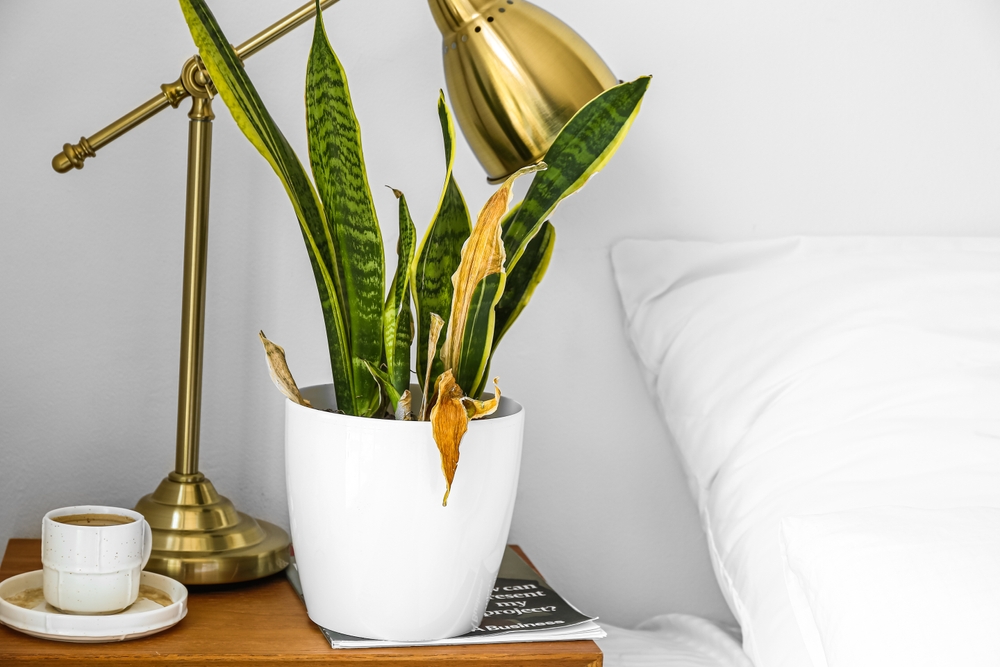
Snake plants are a popular choice for indoor gardeners due to their hardiness and ease of care. However, even the most low-maintenance plants can experience issues from time to time.
One common problem that snake plant owners may encounter is brown edges on the leaves. In this section, we will explore the common causes of brown edges on snake plant leaves.
1. Watering Issues
Overwatering, underwatering, inconsistent watering, and improper watering are all common causes of brown edges on snake plant leaves. Snake plants prefer to be watered thoroughly but infrequently.
If the soil is kept too wet or too dry, the edges of the leaves may turn brown. Chlorine in tap water can also cause brown edges, so it’s best to use distilled water or let tap water sit out for 24 hours before watering.
2. Light and Temperature Factors
Light and temperature can also play a role in causing brown edges on snake plant leaves. Snake plants prefer bright, indirect light and can be sensitive to direct sunlight.
In the winter, they may be more susceptible to cold drafts and temperature fluctuations. If a snake plant is exposed to too much direct sunlight or cold temperatures, the edges of the leaves may turn brown.
3. Pest Infestation
Mites, mealybugs, scale, and aphids are pests that can infest snake plants and cause brown edges on the leaves. These pests can be difficult to spot, but a close inspection of the plant may reveal tiny insects or webbing. If a pest infestation is suspected, it’s important to take action quickly to prevent further damage to the plant.
4. Fungal and Bacterial Diseases
Fungal diseases, such as red leaf spot and southern blight, and bacterial leaf spot can also cause brown edges on snake plant leaves.
These diseases can be spread through contaminated soil or water, so it’s important to avoid overwatering and to use sterilized soil when repotting. If a fungal or bacterial disease is suspected, it’s best to remove the affected leaves and isolate the plant to prevent further spread.
Prevention and Care
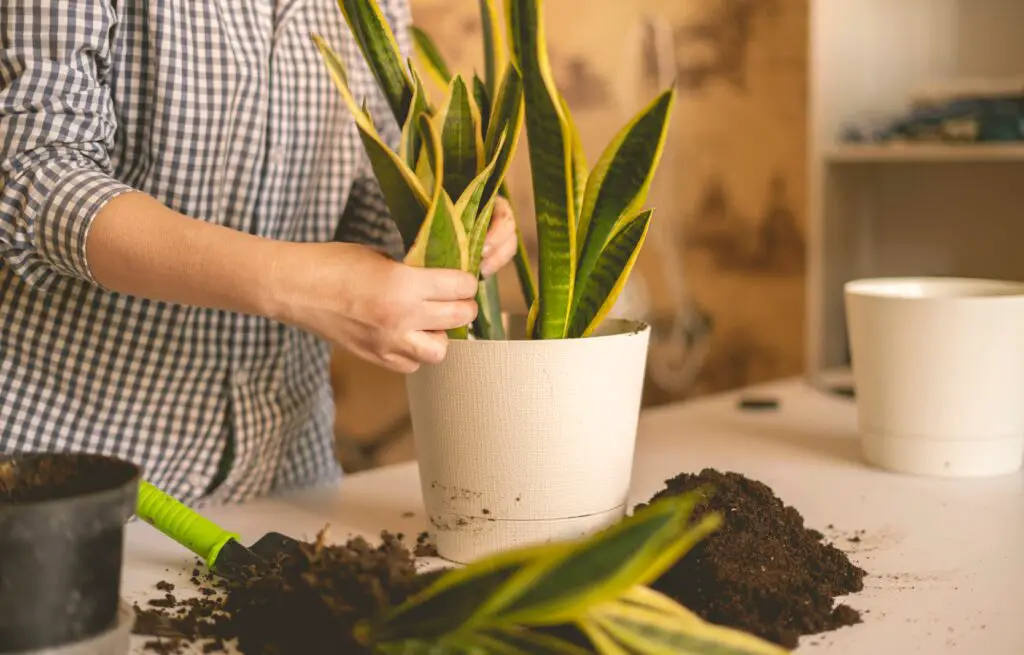
Snake plants are a popular choice for indoor gardening due to their hardiness and low maintenance requirements. However, brown edges on the leaves can be a common issue that is often caused by improper care. Here are some tips to prevent and care for brown edges on snake plants.
1. Proper Watering and Humidity
Overwatering or underwatering can cause brown edges on snake plant leaves. It is important to water the plant only when the top inch of soil is dry. Too much water can lead to soft, mushy leaves, while too little water can cause the plant to become dehydrated and develop brown tips.
Snake plants prefer low humidity, so it is not necessary to use a humidifier. However, if the air in the room is particularly dry, it may be helpful to mist the plant occasionally.
2. Optimal Lighting and Temperature
Snake plants prefer bright, indirect light but can also tolerate low light conditions. Too much direct sunlight can cause the leaves to scorch and develop brown edges.
The optimal temperature range for snake plants is between 60-85°F (15-29°C). Temperatures outside of this range can cause stress to the plant and lead to brown edges on the leaves.
3. Pest Control
Pests such as spider mites, mealybugs, and scale insects can cause brown edges on snake plant leaves. It is important to regularly inspect the plant for signs of infestation and take appropriate measures to control the pests.
Using neem oil or rubbing alcohol can be effective in controlling pests on snake plants. However, it is important to follow the instructions carefully and avoid overuse, which can damage the plant.
4. Disease Management
Fungal diseases can also cause brown edges on snake plant leaves. It is important to prevent fungal diseases by avoiding overwatering and providing good air circulation around the plant.
If the plant does develop a fungal disease, it may be necessary to use a fungicide to control the spread. It is important to follow the instructions carefully and avoid overuse, which can damage the plant.
Treatment and Restoration
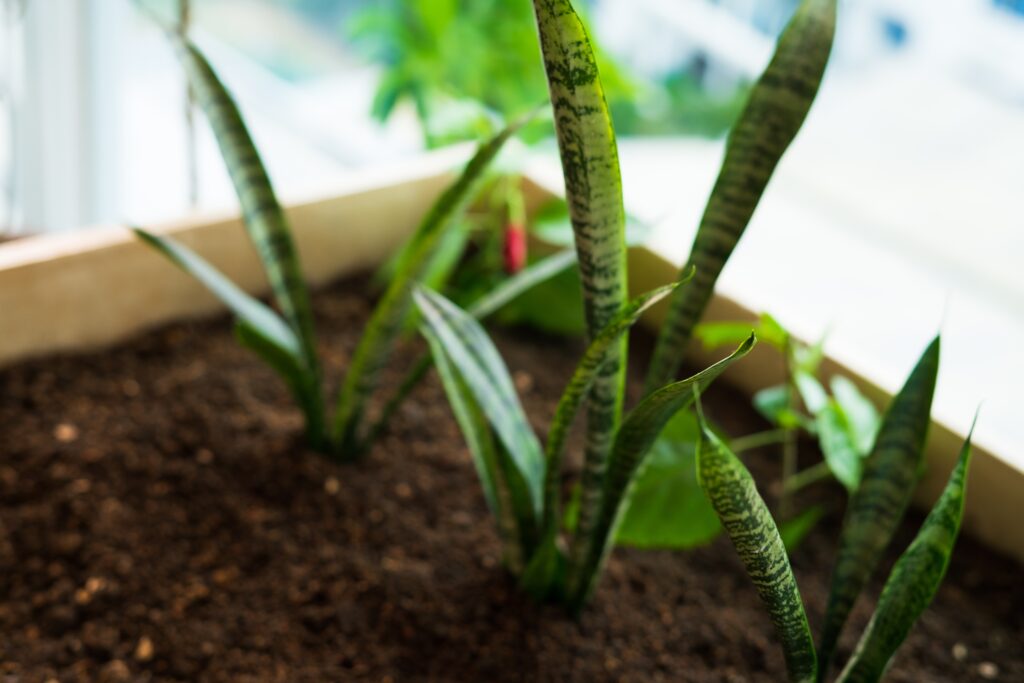
Snake plants are hardy and easy to care for, but brown edges on the leaves can be a sign of damage or neglect. Fortunately, with the right treatment, it is possible to restore your snake plant to its former glory.
Reviving Overwatered Snake Plants
Overwatering is a common cause of brown edges on snake plant leaves. If the soil is too wet, the roots can become waterlogged and begin to rot. To revive an overwatered snake plant, it is important to reduce watering and improve drainage.
If the plant is in a pot without drainage holes, it should be repotted in a pot with drainage holes. Adding pebbles to the bottom of the pot can also help improve drainage. It is important to let the soil dry out completely before watering again.
Repairing Sun Damage
Snake plants can suffer from sun damage if they are exposed to excessive sunlight. This can cause the edges of the leaves to turn brown and dry out. To repair sun damage, it is important to move the plant to a location with less direct sunlight.
If the plant cannot be moved, it may be necessary to provide shade using a sheer curtain or shade cloth. It is also important to ensure that the plant is not too close to a window, as this can intensify the sunlight.
Eliminating Pests
Pests such as spider mites and mealybugs can cause damage to snake plant leaves, including brown edges. To eliminate pests, it is important to identify the type of pest and use the appropriate treatment.
For example, spider mites can be eliminated by spraying the plant with a mixture of water and dish soap. Mealybugs can be removed by wiping the leaves with rubbing alcohol. It is important to repeat the treatment as necessary to ensure that all pests are eliminated.
Treating Diseases
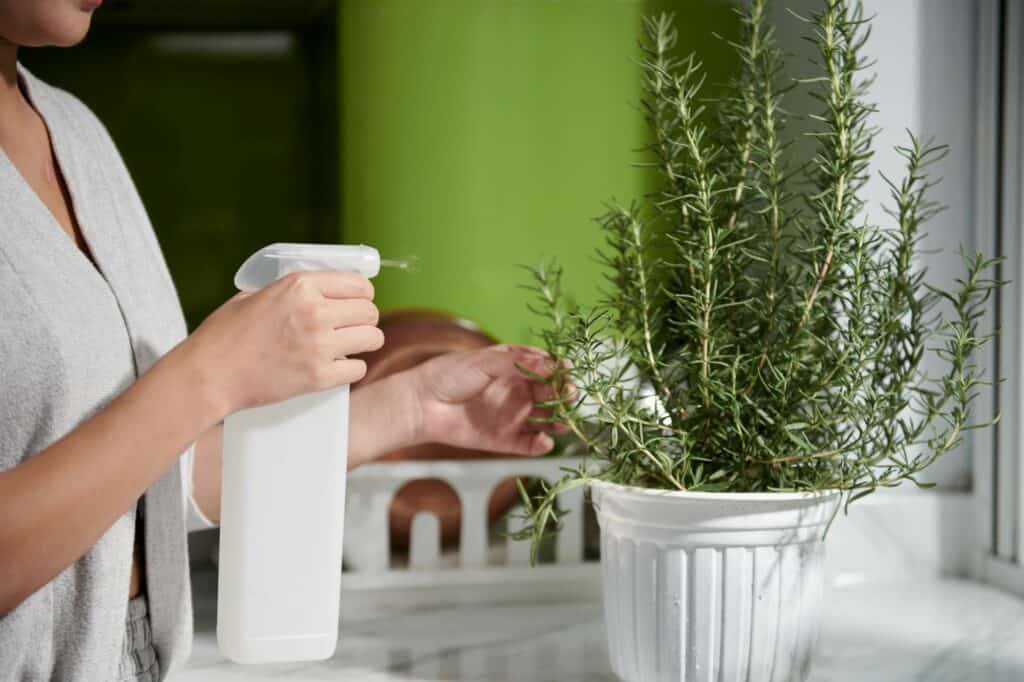
Diseases such as root rot can cause brown edges on snake plant leaves. To treat diseases, it is important to identify the type of disease and take appropriate action.
For example, if the plant is suffering from root rot, it may be necessary to cut away the affected roots and repot the plant in fresh soil. It is important to ensure that the plant is not root-bound, as this can contribute to the development of root rot.
Frequently Asked Questions
How to fix brown tips on snake plant?
Brown tips on snake plants can be caused by a variety of factors, including overwatering, underwatering, or low humidity. To fix brown tips, start by cutting off the affected areas with a clean pair of scissors or pruning shears.
Next, adjust the watering schedule to ensure the soil is moist but not waterlogged. Finally, consider increasing humidity levels by placing a tray of water near the plant or using a humidifier.
Snake plant leaves turning brown and crispy?
If your snake plant leaves are turning brown and crispy, it could be a sign of underwatering. To fix this issue, water the plant thoroughly and ensure the soil remains moist but not waterlogged. If the problem persists, consider increasing humidity levels or moving the plant to a more shaded area.
Snake plant turning brown at base?
If your snake plant is turning brown at the base, it could be a sign of overwatering or root rot. To fix this issue, remove the plant from its pot and inspect the roots for signs of rot. If the roots are brown and mushy, trim them back and repot the plant in fresh, well-draining soil.
Why is my snake plant turning brown in the middle?
If your snake plant is turning brown in the middle, it could be a sign of overwatering, underwatering, or low humidity. To fix this issue, adjust the watering schedule to ensure the soil is moist but not waterlogged, and consider increasing humidity levels. If the problem persists, inspect the plant for signs of pests or disease.
Snake plant broke off at base?
If your snake plant has broken off at the base, it may be possible to propagate the plant by rooting the broken stem. To do this, cut the broken stem into sections and place them in a container of water or well-draining soil. Keep the soil moist and the container in a warm, bright location until new roots and leaves begin to grow.
Should I cut off the brown tips of a snake plant?
Yes, it is recommended to cut off the brown tips of a snake plant to promote healthy growth. Use a clean pair of scissors or pruning shears to trim the affected areas, and be sure to adjust the watering schedule and humidity levels to prevent further damage.

Hey, I’m Lisa and I’ve been an avid gardener for over 30 years. I love writing, talking and living in the garden! Feel free to connect with me on my socials below


